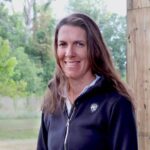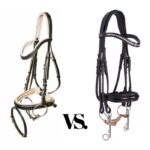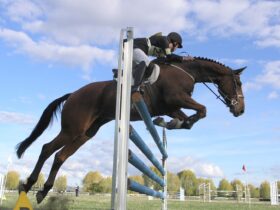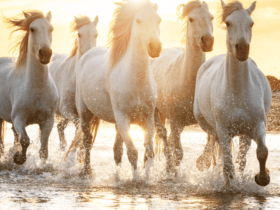—Olivia Lagoy- Weltz
When it comes to the pursuit of making a U.S. Dressage team, there’s a lot more to it than meets the eye. From a spectator’s point of view, we watch our riders have good rides and less-good rides. We read the articles and watch the videos online. If we’re lucky, we get to see them compete in person in California or Florida, and if we’re really lucky, we get to travel overseas to see them in Rotterdam or Aachen. We follow the qualifications as they happen through the scores and articles online, and we all speculate on who we think will be on the team… Then we wake up one day and there’s a team.
To go through the process from the inside, as a rider under consideration, is a very different experience. There are incredible highs and incredible lows. We all have moments of euphoria and doubt. We have good rides, we have great rides, and we have rides that make us wonder if we should give up dressage, move to Hawaii, and take up underwater basket weaving. But none of us really want to do that, of course; we want to represent the U.S. at the 2018 FEI World Equestrian Games™ (and beyond).
The Work. Before riders ever even get to the short list for making a team, we’ve dedicated years and years of practice and hard work to get our horse and ourselves to a level of ability where USEF finally notices us. Sometimes from the outside looking in, it can seem like this process happens overnight or by magic, but that is never the case. Riding—for everyone—is about accumulating skills and experience, building confidence, losing confidence, and then rebuilding and regaining and furthering that confidence. As many of you know from riding yourselves, there’s nothing like riding horses to highlight your “needs improvement” areas, both technically and personally. At this level, we are all perfectionist horse lovers, and there isn’t one rider among us that doesn’t meticulously examine and reexamine everything we do, always looking at how we could do it better, what we will do differently next time, and how to take the best care of our horses. We watch ourselves on video, we watch each other’s lessons, and we constantly seek each other’s advice and constructive criticism.
The Logistics. The amount of logistics that go into organizing and executing rider’s trips to Europe for competitions is truly mind-boggling. The sheer number of support staff it takes to make it all come together—U.S. Equestrian (USEF) staff, our own travel crews, our own home crews, and more—is truly amazing. We have to get our horses through airport security and customs, and then through quarantine. The USEF officials manage all of our arrangements for travel, lodging, entry requirements for countries and for competitions, where we’re going, when we’re going, etc. We and the horses travel from show to show and from country to country around Europe. Through it all, we’re organizing everything necessary to keep the horses happy and healthy (physiotherapy, chiropractors, massage, etc.). And all the while we try to keep a handle on our businesses still operating at home, with our staff training horses and clients in our absence. It’s literally a whirlwind tour for several months, and then it’s time to make all the arrangements in reverse to get us all safely home.
The Cost. There are many very talented riders out there who never quite find the right horse, or don’t have the funding or flexibility in their lives to pursue the sport at this level. The amount of “personal sacrifice” it requires to pursue dressage at the international level is not often realized. To clarify, when I say “personal sacrifice,” I don’t mean that competing at this level is a burden thrust upon us or that it isn’t our choice. It is our choice—and an honor—and it’s a lot of hard work with a lot of people keeping the fire fed behind each rider. It’s an honor and our personal goal, but at this level, it also becomes a total lifestyle. It can be a strain on our businesses and our personal relationships alike. We are constantly traveling. Some years we are away from home more months then we are home. The unsung heroes of this process are always those never mentioned in the press. They are our unwavering and supportive husbands and wives, our families, clients, and staff. They ride the ups and downs with us, weather the never-ending last minute changes to the schedule, and are there when the show’s over—win or lose.
The Future. For the past several years, our dressage programs have been evolving under the vision and guidance of Robert Dover, Debbie MacDonald, Will Connell, Hallye Griffin, and many others. They’ve created a structured pipeline program for elite dressage in the United States, and their hard work is paying off—they are developing the future of elite dressage. They put together our amazing WEG team while at the same time they were already looking for the next U.S. team riders. When USEF finds these riders, they’ll now offer them membership in the pathway programs that links current elite horse and rider combinations with the up-and-comings. Through USEF, we will collectively provide education, coaching, and competition support to the new talent climbing the very steep hill to get here. The goal is to give every rider a clear vision of what they need to do to get over the next hump. This makes the future look bright for U.S. Dressage, but it also shows you how much work and how long it really takes to get to this level.
FEI rider Olivia Lagoy-Weltz is a USDF bronze, silver, and gold medalist. Her earlier experience includes working for and riding at several top barns in Holland and Germany. Olivia is currently competing her own Rassing’s Lonoir (“Lono”) on the CDI circuit in Wellington, Florida and throughout Europe. Most recently, USEF selected Olivia as Team USA’s traveling alternate for the World Equestrian Games, Tryon 2018.
























SOCIAL